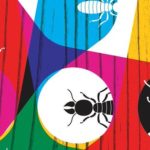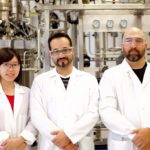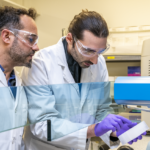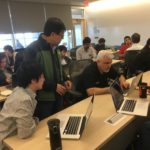 Biosciences scientists Héctor García Martín, Jay Keasling, and Jill Banfield (whose primary affiliation is with the Earth & Environmental Sciences Area) were mentioned an article by Amia Srinivasan entitled “What Termites Can Teach Us” published in The New Yorker. Read the article.
Biosciences scientists Héctor García Martín, Jay Keasling, and Jill Banfield (whose primary affiliation is with the Earth & Environmental Sciences Area) were mentioned an article by Amia Srinivasan entitled “What Termites Can Teach Us” published in The New Yorker. Read the article.
New Machine Learning Approach Could Accelerate Bioengineering
Héctor García Martin and Zak Costello, scientists affiliated with the DOE Agile BioFoundry, the Joint BioEnergy Institute (JBEI), and the Biological Systems and Engineering Division have developed a way to use machine learning to dramatically accelerate the design of microbes that produce biofuel.
Their computer algorithm starts with abundant data about the proteins and metabolites in a biofuel-producing microbial pathway, but no information about how the pathway actually works. It then uses data from previous experiments to learn how the pathway will behave. The scientists used the technique to automatically predict the amount of biofuel produced by pathways that have been added to E. coli bacterial cells. The research is published online in Nature Partner Journal Systems Biology and Applications. Read the Berkeley Lab News Center feature story.
Computing Sciences and Biosciences Hold Machine Learning Workshop
The Lab’s Computing Sciences and Biosciences Areas jointly held a week-long workshop focused on machine learning in data science, the goal of which was to build bridges through a common foundation in statistical computing. Thirty attendees from Biosciences, Computing Sciences, and Lab IT received hands-on training provided by Data Incubator before engaging in a “hackathon” to apply the techniques to relevant science problems and data sets.
Navigating an Ocean of Biological Data in the Modern Era
 Scientists and software engineers at the U.S. Department of Energy (DOE)’s Joint BioEnergy Institute (JBEI) have developed a new -omics visualization tool, Arrowland, which combines different realms of functional genomics data in a single intuitive interface. The aim of this system is to provide scientists an easier way to navigate the ever-growing amounts of biological data generated by the postgenomic revolution. JBEI researchers hope that Arrowland will make it far easier for scientists to reach their next “a-ha!” moment in scientific discovery.
Scientists and software engineers at the U.S. Department of Energy (DOE)’s Joint BioEnergy Institute (JBEI) have developed a new -omics visualization tool, Arrowland, which combines different realms of functional genomics data in a single intuitive interface. The aim of this system is to provide scientists an easier way to navigate the ever-growing amounts of biological data generated by the postgenomic revolution. JBEI researchers hope that Arrowland will make it far easier for scientists to reach their next “a-ha!” moment in scientific discovery.
Was this page useful?





